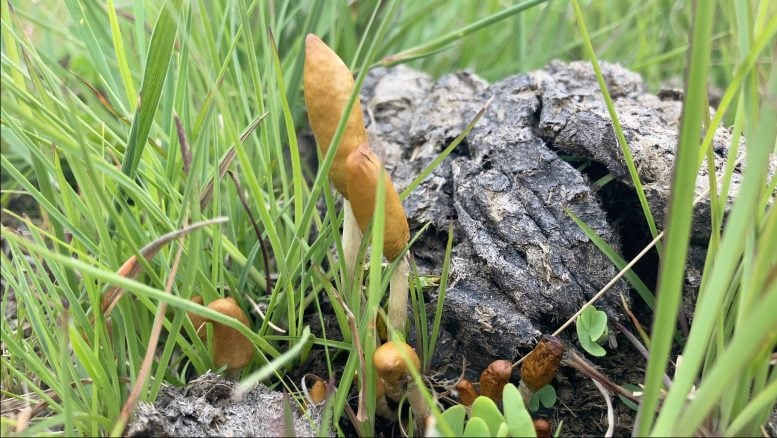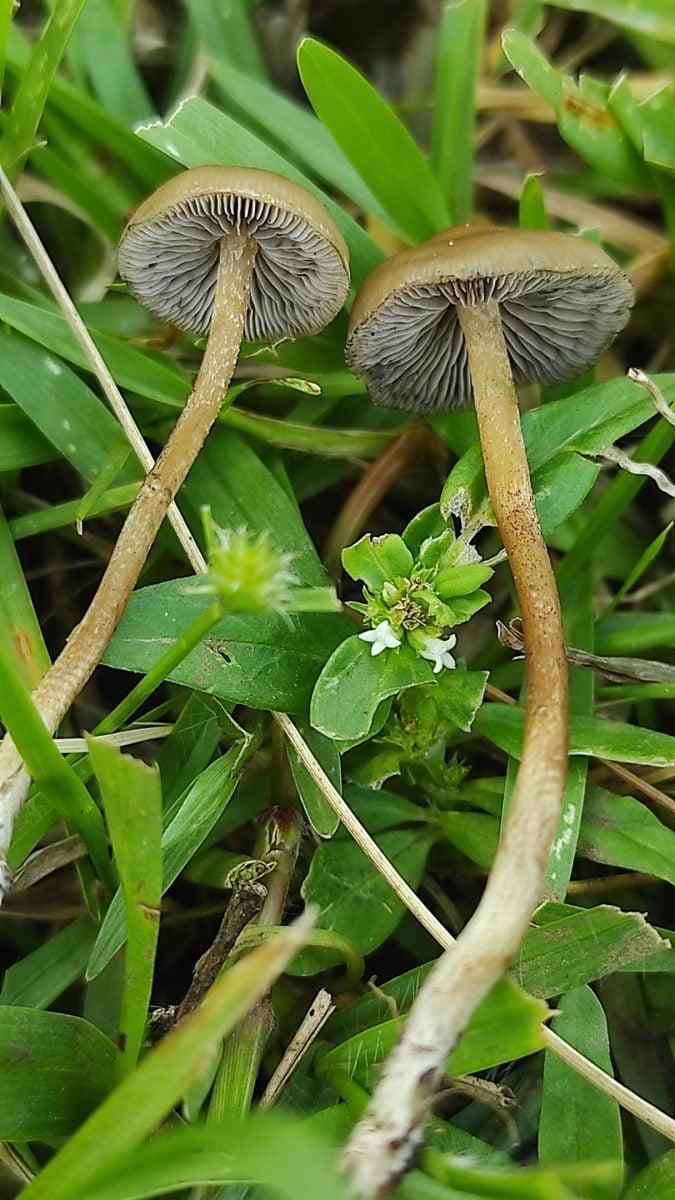
Psilocybe maluti was found growing in pastureland on cow manure in the Free State and Kwa-Zulu Natal provinces of South Africa, as well as the highlands of Lesotho. Credit: Cullen Taylor Clark
Researchers have described two new psychoactive mushroom species in southern Africa, enhancing the documented biodiversity of the region.
In a new study published in Mycologia, researchers from Stellenbosch University (SU) have described two new species of psychoactive mushrooms in the genus Psilocybe. The two species, named Psilocybe ingeli and Psilocybe maluti, were discovered in southern Africa.
Although Psilocybe species are perhaps the most well-known and well-studied species of psychoactive mushrooms in the world, with around 140 described species, only six, including the new species, are indigenous to Africa.
Discovery and Identification
Psilocybe ingeli was first found in 2023 growing in pastureland in KwaZulu-Natal by Talan Moult, a self-taught citizen mycologist. Psilocybe maluti was first found on a Free State small holding in 2021 by Daniella Mulder, who sent photos of the mushrooms for identification to Andrew Killian, one of South Africa’s leading citizen mycologists based in Somerset West.
In both instances, the unusual-looking specimens were sent to Breyten van der Merwe for DNA sequencing and analysis in the lab of Prof. Karin Jacobs in SU’s Department of Microbiology. Van der Merwe, now a postgraduate student in chemical engineering at SU, is a trained mycologist, and the first author of the paper.

A single collection of Psilocybe ingeli was found in KwaZulu-Natal, growing in pasture land. Credit: Talan Moult
Cultural Significance and Traditional Use
The paper also contains information on the traditional use of P. maluti by Basotho traditional healers from the mountain kingdom of Lesotho. According to the researchers, this appears to be the only recorded first-hand report of hallucinogenic mushrooms being used traditionally in Africa. Cullen Taylor Clark, a citizen mycologist and co-author, worked with Mamosebetsi Sethathi, a Mosotho traditional healer, to document the use of P. maluti (locally known as koae-ea-lekhoaba) in traditional healing practices. This forms part of a larger effort, led by Clark, to document the use of mushrooms by indigenous groups in southern Africa.
Future Research and Collaboration in African Mycology
Van der Merwe says there are very likely more southern African species in this genus, and that more citizen scientists need to become involved: “These two species were sent to me by citizen scientists. It would be impossible for a single researcher to cover a fraction of an area these mushroom enthusiasts have access to. This is the only way we will be able to further studies in African mycology.”
Prof. Jacobs echoes this sentiment: “There are only a handful of mycologists in Africa documenting local biodiversity. Considering the vast mycological diversity on the continent, it is a daunting task. Collaborating with citizen mycologists is therefore hugely beneficial. In addition to more material, collaboration also opens avenues for conversation and exploration, which can lead to documenting mycophilia (the love of mushrooms) on the African continent.”
Reference: “A description of two novel Psilocybe species from southern Africa and some notes on African traditional hallucinogenic mushroom use” by B. van der Merwe, A. Rockefeller, A. Kilian, C. Clark, M. Sethathi, T. Moult and K. Jacobs, 2 July 2024, Mycologia.
DOI: 10.1080/00275514.2024.2363137









Be the first to comment on "Researchers Have Discovered Two New Species of Psychedelic Mushrooms in Africa"